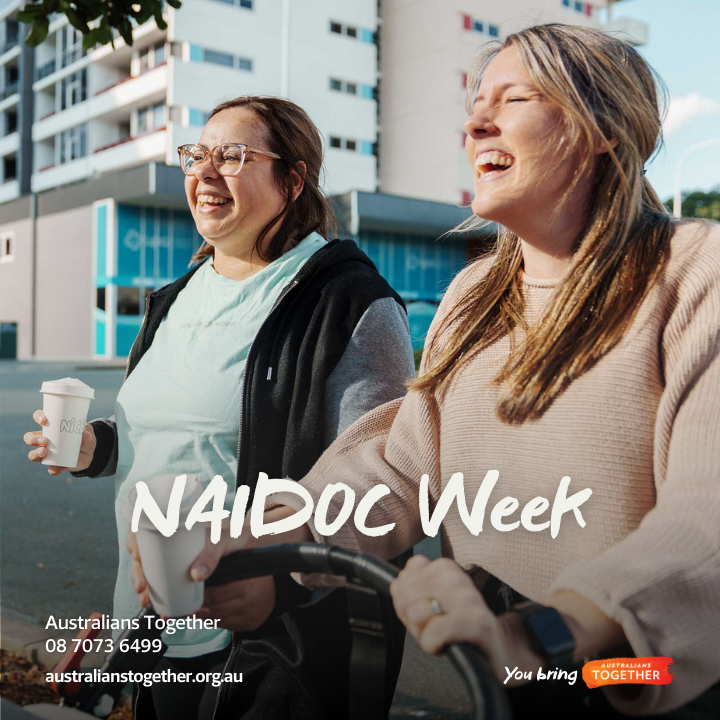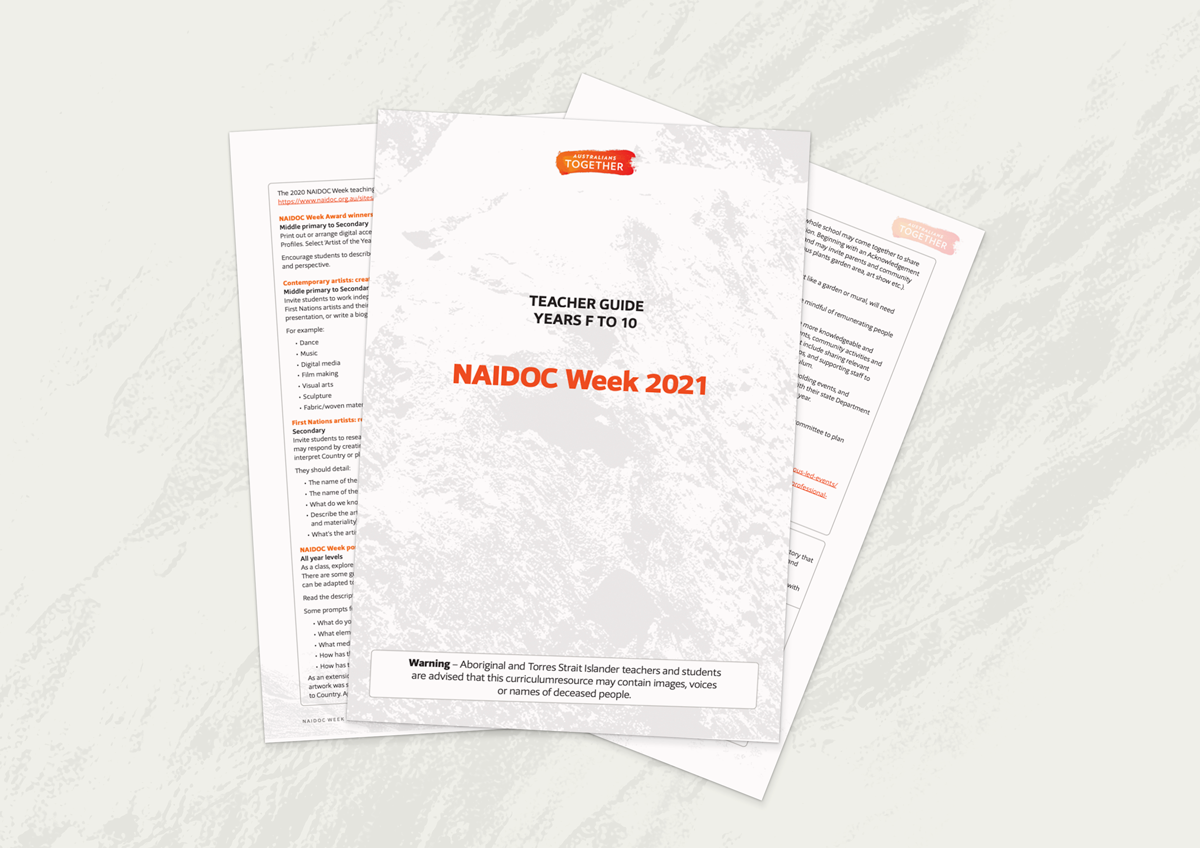NAIDOC Week's a time to celebrate the histories, cultures and achievements of Aboriginal and Torres Strait Islander people. It’s held each year during the first week of July and is an important annual event where everyone’s invited to join in the celebrations.
Each year NAIDOC will choose a theme to build the celebrations around. 2025 is the 50th anniversary of NAIDOC Week, and the theme this year is ‘The Next Generation: Strength, Vision & Legacy’, which celebrates the achievements of the past and a bright future ahead.
-
What does NAIDOC stand for?
NAIDOC stands for National Aborigines and Islanders Day Observance Committee. To understand what all that means though, we need a little bit of a history lesson.
In 1955, the Day of Mourning or 'Aborigines Day' was moved from the Sunday before January 26 to the first Sunday in July. It was shifted because people wanted to focus more on celebrating First Nations cultures rather than protesting. The National Aborigines Day Observance Committee was then created in 1956 to organise national events.
In 1975, it was decided to celebrate for a whole week, rather than just one day. NAIDOC Week was born! Then in 1991, NAIDOC Week expanded to recognise Torres Strait Islander Peoples and cultures.
And that's why it’s called NAIDOC Week.
-
Why's NAIDOC Week important?
NAIDOC Week is important as it’s an opportunity for learning, connection and community.
It gives First Nations people and non-Indigenous people the opportunity to celebrate and connect with community and Country. And it’s a chance for everyone, not just First Nations people, to celebrate all aspects of Aboriginal and Torres Strait Islander histories and cultures.
As well as this, with its origins based in one of the first major civil rights gatherings in the world, NAIDOC Week is an important time to reflect on the challenges faced by First Nations people — to look at how far we’ve come and how far we still have to go.
-
Why do we celebrate NAIDOC Week?
There are so many reasons why people get involved with NAIDOC Week. It’s a chance to celebrate First Nations Peoples of Australia, a chance to highlight challenges that need addressing, a chance to learn about Aboriginal and Torres Strait Islander histories, and a chance to engage with amazing cultures that are thousands of years old.
The next generation: honouring legacy
As the NAIDOC Week theme for 2025 looks to a bright future ahead, listen to the voices of the next generation as they reflect on the importance and impact of Eldership across communities.
If you’re a teacher, jump to the NAIDOC Week curriculum resources. Or, if you’re from a workplace, discover more for you for NAIDOC Week here.
Celebrate NAIDOC Week in your workplace
NAIDOC Week celebrations are held all across Australia – an opportunity for everyone to join in and learn more about First Nations histories, cultures and perspectives.
Why not celebrate NAIDOC Week by organising a visit to a local First Nations site with your team? Whether through a guided tour, museum visit or connection with a cultural centre, these experiences deepen understanding, build respect for Country, and strengthen relationships with local community – great for both your team and your business.

Looking to go further this NAIDOC Week?
There are so many ways to get involved and celebrate NAIDOC Week simply follow the links below.
More curriculum resources to embed in your teaching.
- Search by year level, learning area and topic
- Written by teachers for teachers
- Created in collaboration with First Nations cultural advisors and academics
Teachers
Resources that’ll equip, inform and grow teacher confidence to embrace and embed First Nations perspectives in the classroom.
Learn moreSchools
Resources to support schools for a comprehensive approach to embedding First Nations perspectives. Professional learning, curriculum resources, Meaningful Action Toolkits and more.
Learn moreWorkplaces
Empowering Australian organisations to work together better. Toolkits, professional learning, online courses and more.
Learn more

 The Wound
The Wound
 Our History
Our History
 Why Me?
Why Me?
 Our Cultures
Our Cultures
 My Response
My Response

















